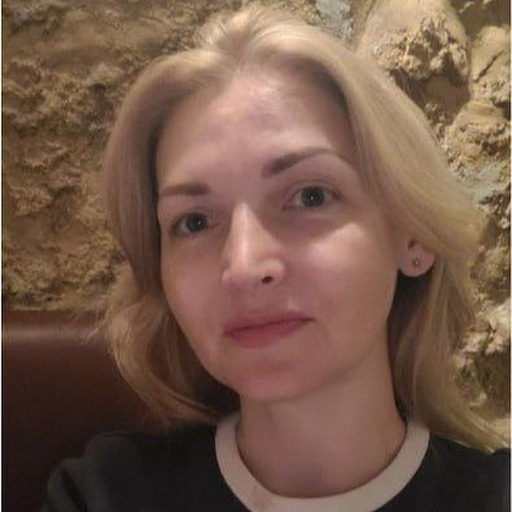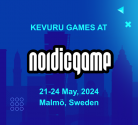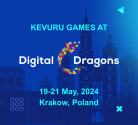Characters in games, such as main characters or non-player characters (NPCs), perform one of the essential roles, conveying emotions and experiences to the player and demonstrating motivation and actions supported by the argumentative storyline of the game.
Roman Kochergin, Head of the 3D Department of the Kevuru Games company, delves into the features and process of creating characters of all styles, shares the secrets of creating them for AAA projects, and advises 3D artists who dream of creating masterpieces.
Intro
The task of characters in games is not only to allow the player to control this or that body or object. The task is to immerse the player in the narrative and provide all the necessary functions for immersion in the game process, such as moving, conducting dialogues, showing emotions, various interactions with the environment, etc.
It’s not possible to imagine a game without characters, except for casual games like “Match 3” and others. Even in such products today, there is often an additional plot line with characters and their motivation to progress through the game process, while the main game mechanics remain in a symbol-matching game format.
Depending on the plot, setting, platform, and many other factors, game characters differ in their core, essence, and style.
There are a vast number of styles of 2D and 3D graphics, but for the sake of simplification, they can be divided into two main definitions:
1. Stylized characters (with a cartoon appearance);
2. Realistic (where the characters look lifelike)
But they all perform one crucial function: immersion in the game.
How To Create Characters That Will Love Millions of Players
However, not only characters trigger our deep emotions in the gameplay. Along with them, there is a mass of no less vital things, such as the environment, mood, game script, style, etc.
It is necessary to work out the general character’s appearance and convey his life story through his clothes, temper, voice, and look to create a genuinely fascinating character who will trigger the player and make him experience positive or negative emotions. It is not enough to briefly describe the character’s story so we can feel him as something alive with a past. Designers should take into account all the intricacies of the script. It’s when your character radiates logic in his existence, his temper mirrors his life experience, and his actions and motivation are reasoned; his appearance in general reflects his story. Such a character awakens curiosity and a desire to walk in his shoes and experience his journey.
An excellent example of well-thought-out characters is the Star Wars universe and the games based on it.
All the story’s characters are thought out profoundly and in detail. All of them have a vast life path, which is often not reflected in the narrative but is quite clearly reflected in each character’s appearance, temper, and motivation. In this case, it is enough to hint to the player about the character’s past in the plot to introduce how this personality will already gain meaning and interest us.
There are also games based not on the plot but on a competitive basis. A vivid example can be Fortnite. When the storyline does not oblige the players and other characters in the game to follow a predetermined plan. The characters can be much more diverse, often having nothing in common with each other or the world around them, giving us complete freedom of action within the game mechanics.
The main task of such characters is to be attractive to the player, often referring to characters in cinema, books, games, etc. Still, their appearance can be a pure flight of artists’ imagination.
This approach does not negate the requirement to stick to a particular style in the game, and despite the lack of connection between certain characters, they still look harmonious next to each other.
Real People and Fantasy Characters: Features of Creating Characters by the Kevuru Games Team
Each style dictates its own unique requirements and approaches to character creation. There is a typical delusion that stylized characters are much easier to create and require low-level skills from designers, but this is not true.
Any stylized character requires a very expressive appearance and a well-thought-out anatomy, considering how the character moves, articulates, and expresses emotions.
In the case of realistic character creation, all this is also necessary; therefore, most often, highly skilled artists are divided into specialists in creating realistic and stylized characters.
The main goal of the Kevuru team is to create graphics of the highest quality for clients, which is why we actively focus on developing our experts’ skills, improving the qualifications of each individual, and maintaining the most comfortable working conditions within the teams.
Among the guys who create characters, there are specialists of different levels, starting with Junior Artists, who most often develop their skills with more experienced specialists and Team Leaders. The team’s core comprises Middle and Senior Artists working on AA and AAA level projects.
As in all other 3D areas, we divide our 3D Characters team into artists by stylization and realism. Nevertheless, most of the experts have some narrow specializations, which we emphasize while training and improving qualifications. Such specializations include the skill of working with hair and wool (Grooming Artist), sculptors with excellent knowledge of human anatomy, artists specializing in the creation of animals and birds, etc.
The Process of Creating Characters From A to Z
As we have already discussed, different game styles and genres dictate their unique approaches and requirements for each character. Based on such requirements, we create a unique pipeline of characters, which can look like this:
Concept
It’s the basis for the process of creating any 3D character. One of the most important stages is the planning stage. The character acquires its unique appearance, story, and mood at this concept stage. This work includes a detailed drawing of the character from all sides, his things, and objects that will always be with him.
Also, everything hidden from the players’ eyes (for example, under a coat) is worked out at this stage. And it’s necessary to create the correct anatomy and further character animation.
The concept stage consists of several iterations, starting with dozens of quick sketches that are gradually filtered out in search of the project’s most harmonious and suitable silhouette. It ends with a detailed analysis and drawing of each button, material, and location.
Blocking
Most 3D characters pass this stage, except for the project’s rare stylistic and technical features.
Blocking is a simplified 3D modeling of a concept that displays the primary volumes and shapes of the body and objects of the future character. At this stage, the body’s basic proportions, the joints, and other parts are worked out.
High-Poly
At this stage of character development, artists work out and detail the future character. Based on the approved blocking, all the elements of the character’s anatomy, clothes, and objects are recreated, starting with working out the muscles, oral cavity, and shoe soles, ending with the pores on the face skin. Most of the work at this stage is performed in sculpting mode. One of the most popular programs for creating High-Poly is Zbrush.
Creating a character’s clothes can be a separate process, depending on the future character’s style and the type of clothes he wears. In some cases, you can get by with only one Zbrush program, but when it comes to AAA-level realistic characters, their clothes are often created in third-party programs, such as Marvelous Designer. This program allows you to sew any clothing and simulate its physical properties on the character’s body.
After such manipulations with the clothes, we reassemble all the parts in the Zbrush program, where all the complex and ambiguous parts of the 3D model are adjusted and corrected. All the tiniest details, such as zippers, patches, pockets, buttons, etc., are finished and positioned.
The hair of the character, if the model is stylized, is created in pure forms without leaving Zbrush, but if it is necessary to work with realistic hair, then the process of creating it can be transferred to third-party software and plugins, such as Xgen, Ornatrix, Houdini, Fibershop, etc.
Retopology
When the High-Poly model is ready, it must be optimized. This process is necessary to reduce the model’s weight and the number of its polygons to a minimum. Using a high-polygonal model is simply impossible since all the device’s computing power will go to processing only this model.
That is why, based on a High-Poly model, a Low-Poly copy is made of it. It has thousands of times fewer polygons and total weight. The Low-Poly version can be created in different modeling programs, such as Maya, 3ds Max, Blender.
At this stage, it is necessary not only to reduce the weight of the model but also to take into account the peculiarities of working out the mobile areas of the character for future animation, such as elbows, knees, fingers, etc.
UV scan
This stage of work is necessary to further transfer the detailing of the High-Poly model to its Low-Poly version. The UV scan is where it is transferred. This stage can be described as work with origami, when a three-dimensional figure is created from a plane using a fold, only, in our case, everything is the other way around. We lay out the parts of the ready-made volumetric body of the Low-Poly model on a plane.
Baking
It’s one of the most mysterious processes, especially for people unfamiliar with 3D graphics. With a little magic and work on setting up the necessary resources in the programs Marmoset Toolbag or Substance Painter, and thanks to a pre-prepared High-Poly model, a well-developed Low-Poly version, and UV scanning, all the detailing from the High-Poly model is transferred to its Low-Poly version.
In fact, we can call it fake detailing since all volumes transferred from true HighPoly geometry are only 2D information on a flat texture map, and thanks to physical lighting in a 3D scene, we get the illusion of this detailing, which is already enough for a decent appearance of the 3D model, even with a minimal number of polygons.
Texturing
Model texturing is the process of painting and creating materials. Depending on the pipeline and requirements for the model, you can choose the most suitable program for this stage of work: Substance Painter, 3D Coat, Marmoset 4.
Different technical approaches to future materials are used for different genres and styles; we usually use Handpaint and PBR texturing.
Regardless of which pipeline we use, the process of texturing 3D models is similar to layer-by-layer drawing in Photoshop, except that many things in this process are implemented not only by manual drawing but also by procedural generation and filling.
At this stage, the character gets the final touch. After completing this process, all character materials are saved in the necessary formats, depending on where and how we want to use the character further. Game engines such as Unreal Engine, Unity, or their own product companies’ engines are usually used. Each of them has some requirements for textures, which is performed at the final stage of exporting after the completion of texturing.
Our Tips For Beginners
Well, if you’ve come this far, it’s because you’re passionate about art and developing characters. And to continue, we’ll give you some advice that can help you on this road and show you that you’re not alone on this journey. So let’s go.
1. Learn everything about human anatomy. Studying the fundamentals is something we use for life. Look for books and courses, and don’t limit yourself to 3D software. Fundamentals of drawing and artisanal sculpture form an artist with more vision and prepare you for more significant challenges.
2. Visit museums and study different cultures and ethnicities. The more you understand the character, the more connected you become, so decisions will be better when producing something extraordinary that makes more sense to people.
3. Be humble and let go of your ego. Emotional intelligence is something you can have control over. Some studies can be frustrating, but mistakes are part of success. Don’t despair. Create processes to deal with challenges, and be better at each turn, noting where you need to study, focus more, or correct the course. Accept feedback, write bits of advice, follow tips, and be honest with your work. Look for errors and correct them; over time, the memory will know what should or should not be done to achieve the result, which requires experience.
4. Ask everything you can. At first, it may seem not comforting, but write down your questions and try to find the answers yourself. After you have done all the research, if you need more information, ask more experienced people.
5. Manage your studies, create trello, spreadsheets, and over time, you can monitor your results. This will make you more motivated and happy to continue at full strength.
6. Take everything you do seriously. If you are going to make an outfit, try to make the best in the world, aim high, and seek excellence, but observe the world and keep in mind that the best have dedicated a lot and spent hours of research and work. Refrain from comparing yourself to the results of other artists who have been in the industry for 20 years. You are starting and must go the same path we have all gone through.










